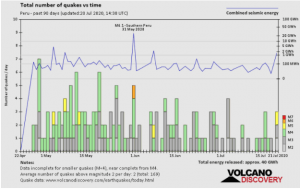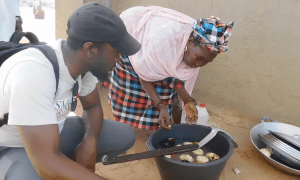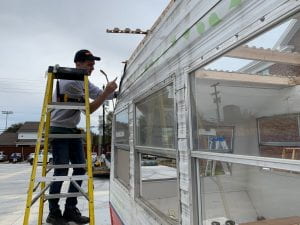During these uncertain times, the Hunt Institute for Engineering and Humanity’s Global Development Lab has been hard at work this summer. Fellows, faculty, and industry professionals collaborate to create meaningful solutions to promote a resilient humanity. While supporting our community the Global Development addresses the UN’s Sustainable Development Goals and challenges. One collaborative interdisciplinary team is lead by two Fellows, Dr. David Son and Dr. Paul Krueger. Their project is a joint chemical and engineering approach to develop a degradable plastic to address the environmental issues of plastic waste. It is comprised of two lab teams and a team in the Hunt Institute. Featured in the image to the left was the team in the Spring of 2020 semester. Over the Summer semester, Sami Streb joined Dr. Krueger’s lab team and Taylor Grace as the undergraduate project manager.
Currently, many biodegradable products in the market are bio-based, produced from nature (plants, animals, or microorganisms). For example, they may contain products such as polysaccharides, proteins, and lipids. However, this approach faces challenges due to high cost, weaker performance, and overlooked environmental issues. Several degradable plastics have proven to break down faster under specific environmental conditions. Although, it may not actually reflect the normal environment, but it may not be effectively degradable under natural conditions. Many biodegradable plastics tend to need particular waste management methods which are not always widely available. These challenges pose a gap in the market due to the composition and degradation abilities.
As a result, Dr. Son and Dr. Krueger plan to investigate various prototype plastics with predictable degradation and mechanical properties, specifically useful in ![]() applications for alleviating plastic waste. These characteristics are significant advances to biodegradable products currently leading the market. With the ability to control the plastic’s properties, they can impart certain desirable properties to the material or give predictable properties to the final plastic material.
applications for alleviating plastic waste. These characteristics are significant advances to biodegradable products currently leading the market. With the ability to control the plastic’s properties, they can impart certain desirable properties to the material or give predictable properties to the final plastic material.
In order to make the largest impact in the current biodegradable plastic industry, a potential deliverable for their research could be to pursue a single-use PPE similar to what is typically used due to the COVID-19 pandemic of 2020. Specifically, the project is researching the production of a degradable mask frame with adequate seal to the face, as seen in N95 respirator masks. Typically, plastic can take ~ a thousand years to degrade in a landfill where degradable plastic (or PPLs) can degrade in ~ one year. Certain plastics can be designed to begin degrading when introduced to a certain property like salt water. The teams are exploring a variety of options. One area of interest is the inevitable increase of medical waste due to the rise in single-use face coverings and analyzing the shortage of single-use respirator masks in health care facilities due to the direct interactions with infected patients. This is in alignment with the UNSDG Goal 3, “To ensure healthy lives and promote wellbeing for all at all ages.” It will also address Goal 14, “To conserve and sustainably use the oceans, seas, and marine resources” due to the degradable nature of the frame.
Stay tuned to the Hunt Institute Digest to read more about this project and other projects in the Global Development Lab.
To read more about the Hunt Institute’s work to develop future-focused solutions to some of the world’s biggest problems, please click here. For the latest news on the Hunt Institute, follow our social media accounts on LinkedIn, Facebook, and Instagram. We invite you to listen to our Podcast called Sages & Seekers. If you are considering engaging with the institute, you can donate, or sign-up for our newsletter by emailing huntinstitute@smu.edu.





















